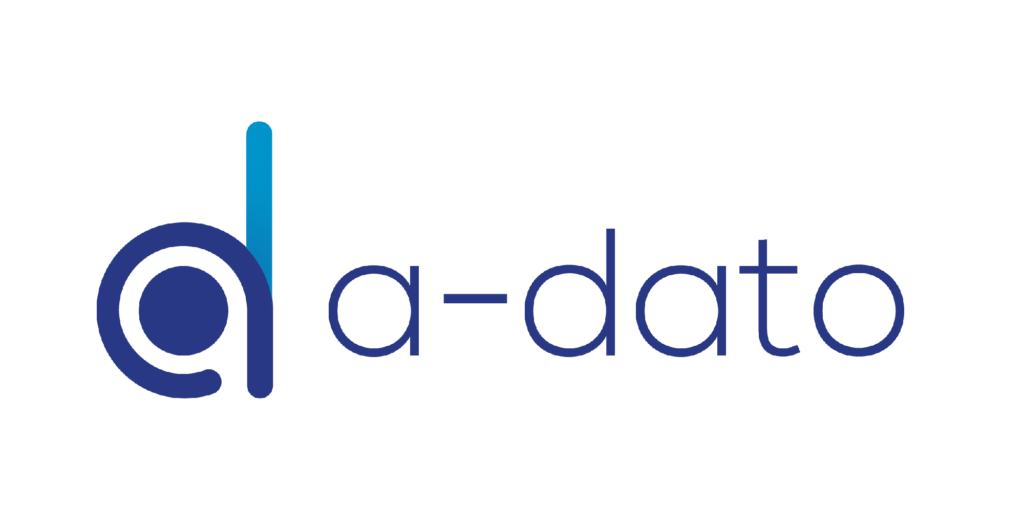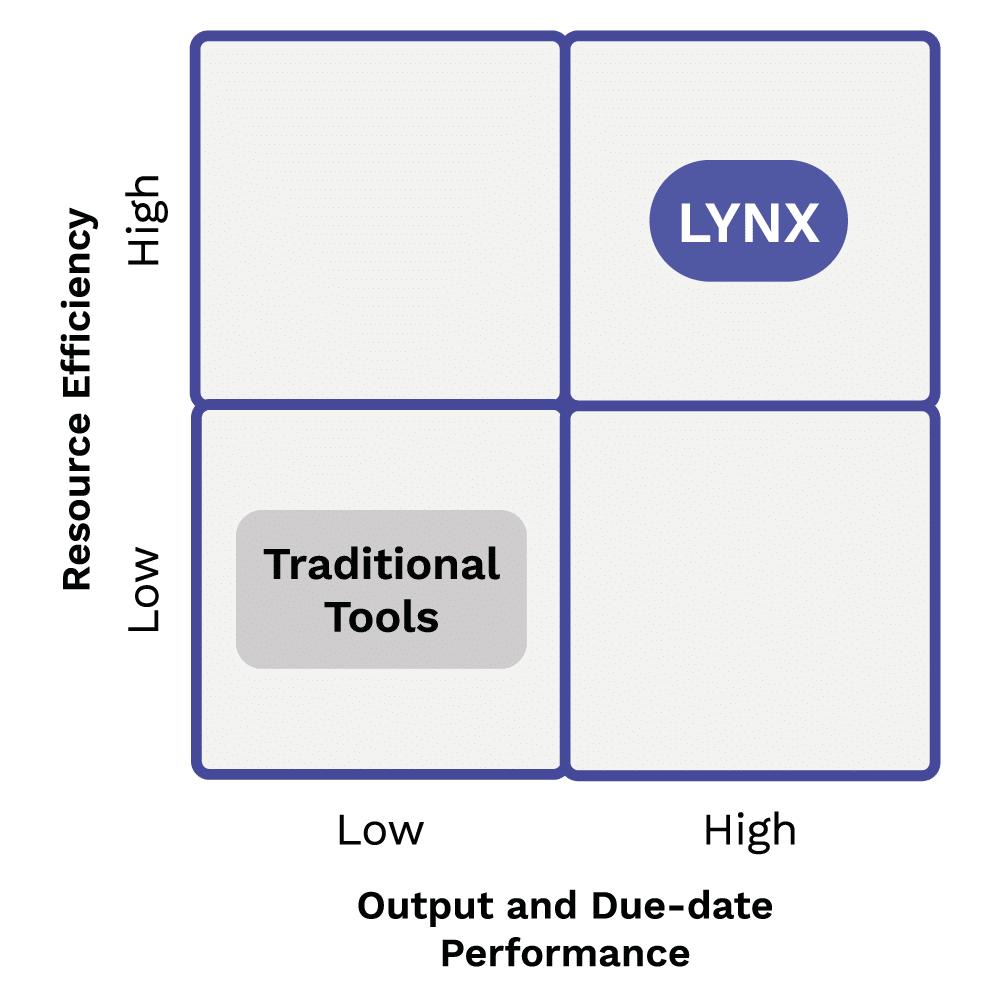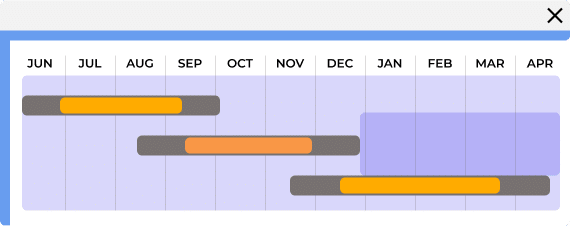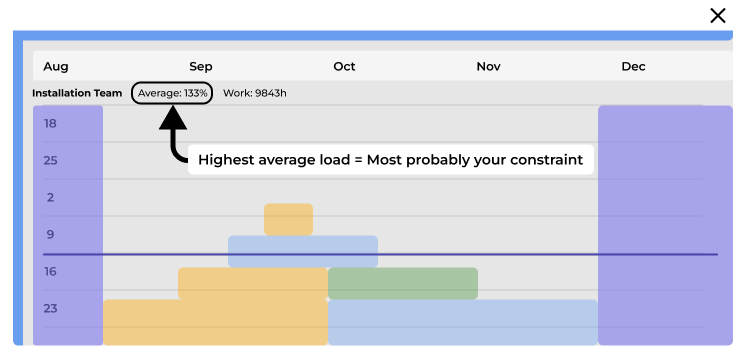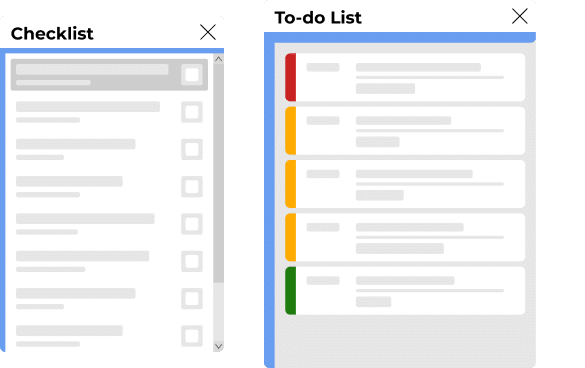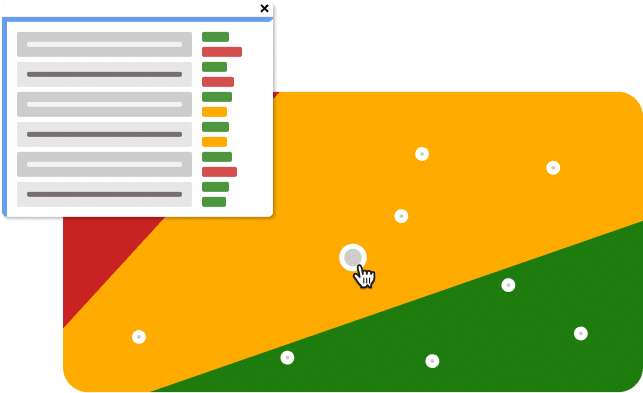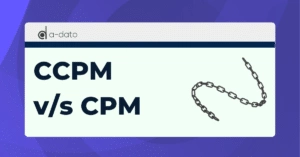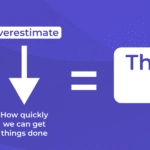Wondering which CCPM software tops the list? Puzzled about the one you should opt for? What makes a CCPM tool stand out? We’ll tackle these questions and more, making your CCPM choice less daunting. To do so, we’ve compiled a comprehensive list of top CCPM tools, to aid your decision-making process.
The Essence of CCPM
Our ‘Critical Chain Project Management (CCPM) Explained‘ article delves into CCPM’s core. At its heart, CCPM is a project management strategy spotlighting essential resources and task sequences. Thereby, CCPM’s adoption can slash task durations, boost focus, and throughput, and enhance resource scheduling. It addresses common pitfalls like Parkinson’s Law and Student Syndrome. Moreover, unlike traditional methods such as the Critical Path Method which overlooks resource availability, CCPM offers a refined, resource-focused scheduling approach.
Must-have CCPM Software Features
On the hunt for CCPM software? Certain features are non-negotiable. They include:
- Critical Chain Pinpointing: Tackling the critical chain in projects with numerous tasks and dependencies can be daunting. CCPM tools simplify this by auto-identifying the critical chain, allowing managers to zero in on mission-critical tasks.
- Resource Balancing: Juggling resources across projects can lead to overuse and burnout. CCPM tools come with resource balancing features to ensure fair allocation without overwhelming team members.
- Task Time Reduction and Buffer Management: Traditional task safety times often lead to inefficiency. CCPM tools advocate for cutting down task times and centralizing safety times into buffers, enhancing productivity.
- Integrated Project Plans: A cohesive project plan capturing all tasks and dependencies is vital. CCPM tools support the creation of such plans, ensuring no task is overlooked and facilitating accurate execution.
- Fever Chart Visualization: Monitoring project progress can get complicated. CCPM tools offer fever chart visualization for a graphical health check of projects.
- Prioritized Work Lists: In fast-paced project environments, task prioritization is key. CCPM tools generate prioritized task lists, helping teams focus on what matters most.
This article will introduce you to 9 software with CCPM capabilities. We’ll detail what each software offers and how they could benefit you. Before we begin, we highly recommend checking out this article which provides an overview of some CCPM solutions.
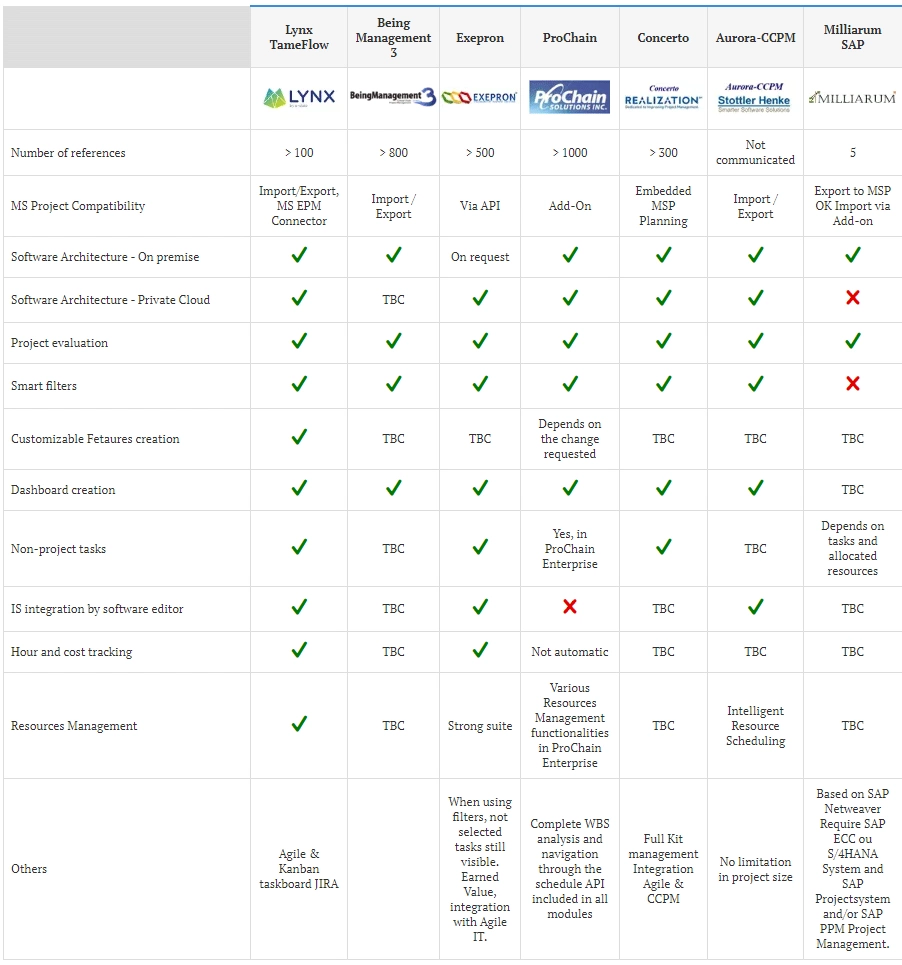
If your product appears in the article but you would like to add comments please contact us so we can update it accordingly.
We will start with the LYNX CCPM Software by A-dato. LYNX has been used by companies across the globe such as Meiko, Zeiss, Endress + Hauser, Airbus, Bruns, Bosch, and many more.
LYNX CCPM Software
Leading the CCPM pack is LYNX by A-dato, a favorite among global giants like Meiko, Zeiss, and Airbus. With nearly two decades of CCPM prowess, LYNX blends Theory of Constraints (TOC) principles with methodologies like Agile and Scrum.
LYNX is designed to make organizations as well as people more productive and happier at the same time. For instance, when Bruns used LYNX on their shop floor, witnessed a reduction of the installation budget from 150% to 90%. Further, Endress + Hauser saw a a fall in deadline delays from 50% to 25% within 18 months.
LYNX Features
Usability and User Experience
- Ease of Use: LYNX offers a drag-and-drop interface, hotkey selections, and features like split and dissolve tasks and auto-tagging,
- Customization: LYNX is highly customizable, offering the ability to switch between CCPM and non-CCPM modes and the presence of an integrated Agile layer (TameFlow). These customization capabilities fit various project management styles.
- Accessibility: LYNX is accessible via the desktop app, web browser, and mobile app.
Functionality and Features
- Advanced Scheduling Engine: At the heart of LYNX is a highly advanced scheduling engine, a dynamic force that optimizes resource utilization, resolves conflicts, and propels your project toward unparalleled efficiency. Our recent whitepaper showcased how LYNX’s scheduling engine calculates a solution 4 weeks faster (20 days / 22% improvement) than MS Project, impacting resource efficiency positively by 20%.
- Scenario Wizard: Create unlimited scenarios for adding projects to your portfolio pipeline in the future. Manage resource conflicts, get a clear project pipeline, and control the Work-In-Progress (WIP). Prevent critical resource overload and release your projects exactly at the right time into the pipeline.
- Resource Management: LYNX offers advanced features like real-time resource monitoring and automatic load balancing to optimize resource allocation across multiple projects. Moreover, LYNX strategically allocates critical resources to priority tasks, ensuring projects are delivered efficiently based on the ‘Principle of Aggregation’ and ‘Late Binding’. Finally, LYNX integrates the ISA-95 Resource Management Model to precisely assign skills and resources.
- Task Management: Leverage visual taskboards like Kanban and Scrum to easily monitor progress, pinpoint bottlenecks, and adjust to real-time changes. With integrated sub-task management, break down complex tasks for detailed oversight and execution while maintaining overall perspective. Enhance collaboration through task reviews, enabling feedback, updates, and effective communication within tasks, improving clarity and teamwork.
- Reporting and Analytics: LYNX offers extensive reporting capabilities. Some examples of the reports include the Continuous Flow Diagram, Portfolio Status Report, and Skill Buffer Penetration Analysis.
Integrations
- JIRA Integration and Synchronization: Seamlessly connect LYNX with JIRA to ensure real-time task updates and tracking, allowing for a unified view of project progress and resource allocation.
- MS Project Import and Export: Effortlessly import project plans from MS Project into LYNX and export LYNX plans back to MS Project, ensuring a smooth transition and consistency across project management tools.
- EPM Integration: Integrate with Enterprise Project Management (EPM) systems for a comprehensive overview of enterprise-level projects, facilitating better strategic planning and resource management.
- Rich APIs: LYNX’s extensive APIs allow for custom integrations, enabling organizations to tailor the software to their unique ecosystem, connecting with CRM, ERP, and other essential business tools.
- “Debuffered” Plan Presentation and Export: Unique to LYNX, this feature allows for the presentation and export of plans without the built-in buffers, offering a clear view of the critical path and task durations for stakeholders not versed in CCPM.
- Integration with SharePoint and Similar Platforms: LYNX integrates with SharePoint and comparable platforms for document management, ensuring all project-related documents are centralized and accessible.
- Document Uploads: Directly upload and associate documents with specific tasks or projects within LYNX, keeping all relevant information at your team’s fingertips for efficient project execution.
Support and Training
- Online Knowledge Base: Access a rich repository of articles, how-to guides, and FAQs in the online knowledge base, designed to provide quick answers to common questions and challenges.
- Extensive Manuals and Online Help: Benefit from detailed user manuals and online help resources that offer step-by-step instructions and insights into utilizing LYNX to its fullest potential.
- Pre-defined Sandboxes: Experiment and learn in a risk-free environment with pre-defined sandboxes, allowing users to explore features and functionalities without affecting live projects.
- Switch On / Switch Off Functionality: LYNX includes intuitive features that allow users to easily enable or disable functionalities based on their project requirements, ensuring a customized and streamlined experience.
- Highly Customisable: Not only is the customer care of LYNX highly responsive but it is also possible to request specific new features to benefit your organization.
Ready to try LYNX for yourself? Click here to request a free demo and consultation with one of our experts.
BeingManagement 3
Another popular CCPM software solution is BeingManagement. BeingManagement originates from Japan and is used by several Japanese companies with a history of over 15 years.
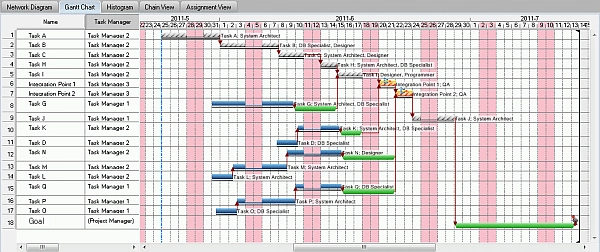
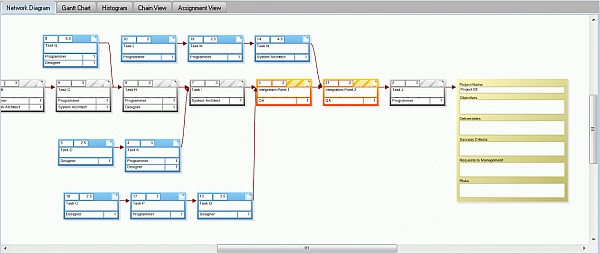
Features
- Critical Chain Scheduling: BeingManagement Planner automates CCPM planning and scheduling, including estimation cuts, leveling, critical chain identification, buffer insertion, and slack elimination.
- Project Staggering: The Flow Planner aids in determining project start dates based on resource constraints, employing the CCPM staggering method to prevent constraint overloading.
- Fever Chart Visualization: The software employs “fever” charts to display project status, using a simple color-coding system to indicate project health, making it easy to identify and mitigate delay risks.
- Portfolio Dashboard & Analytics: A multi-project fever chart offers a comprehensive view of all projects, highlighting those at risk and fostering a collaborative management culture.
- Task Acceleration: The Task Management Center prioritizes tasks by urgency and importance, helping teams focus on critical activities to maintain project momentum.
- Capacity Management: Resource histograms provide visibility into current and future resource loads, helping to preempt and address potential overloads.
- Continuous Improvement (POOGI/Kaizen): Relevant Reason Analysis offers a Pareto analysis of delay causes, facilitating ongoing improvement processes that can lead to significant reductions in lead times and increased due date performance.
Exepron
Exepron delivers one-click navigation and a globally accessible cloud-based platform. It is a relatively simplified CCPM solution without all the CCPM features of some of the other softwares.
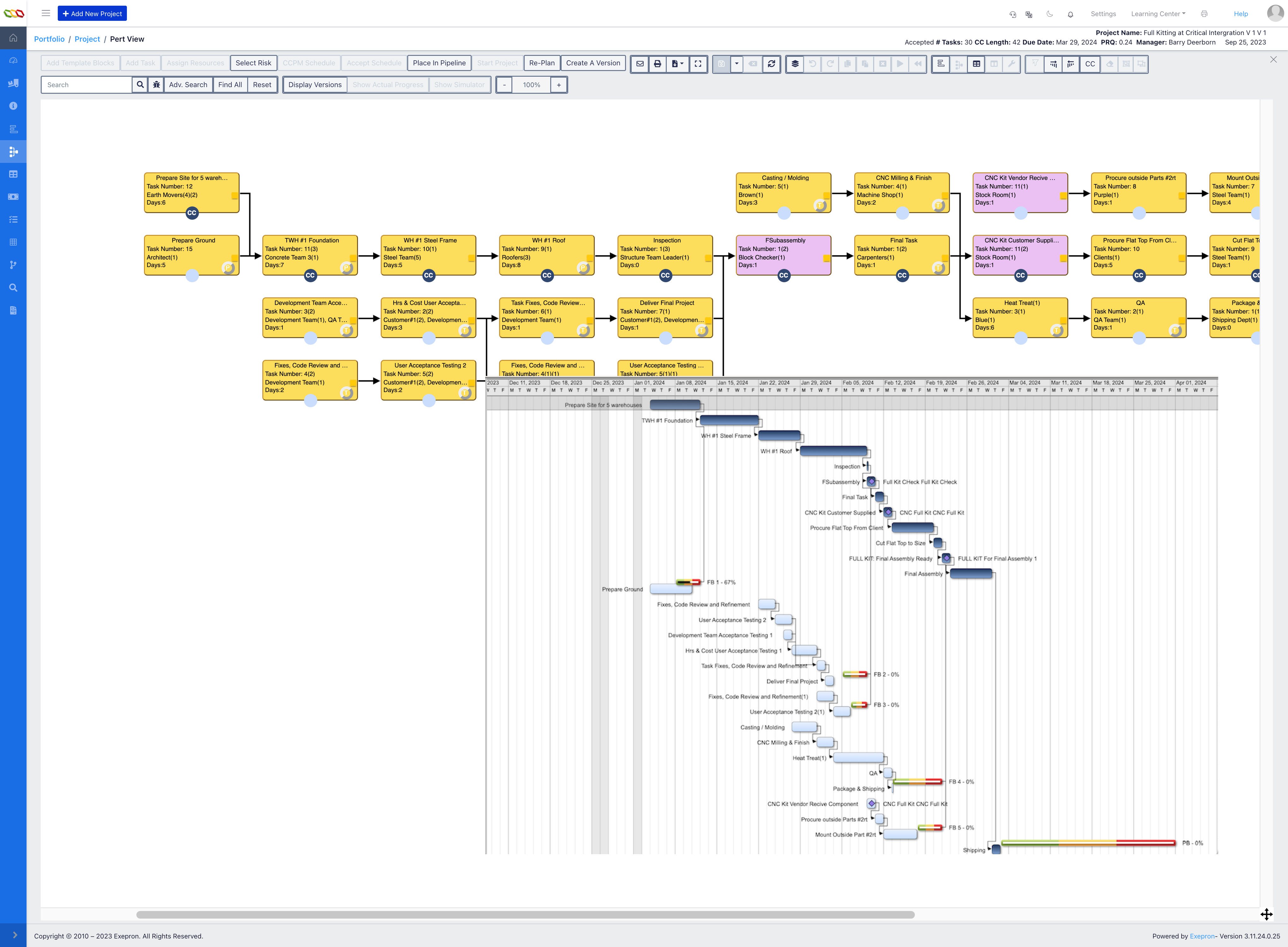
Key Features of Exepron
- Dynamic Drum: This unique feature recommends optimal project start dates by aligning them with resource constraints, thus facilitating smooth project initiation without overburdening key resources.
- Buffer Management: Exepron’s critical chain method includes strategic buffer insertion at crucial points within the project timeline, providing a cushion against uncertainties and enabling early interventions to keep projects on track.
- Informative Real-time Dashboards: Exepron’s real-time dashboards offer immediate insights into project progress, critical chain status, and resource utilization, enabling proactive management and timely decision-making.
- AI-Driven Project Compiler: Exepron’s AI-driven compiler meticulously analyzes your project’s PERT network, ensuring validity, optimizing resource assignments, and mitigating contention right from the planning stage.
ProChain
ProChain Solutions offers a suite of software tools to support the implementation of CCPM and the ProChain methodology. The ProChain System provides a framework for managing individual projects and scaling up to enterprise-wide solutions.
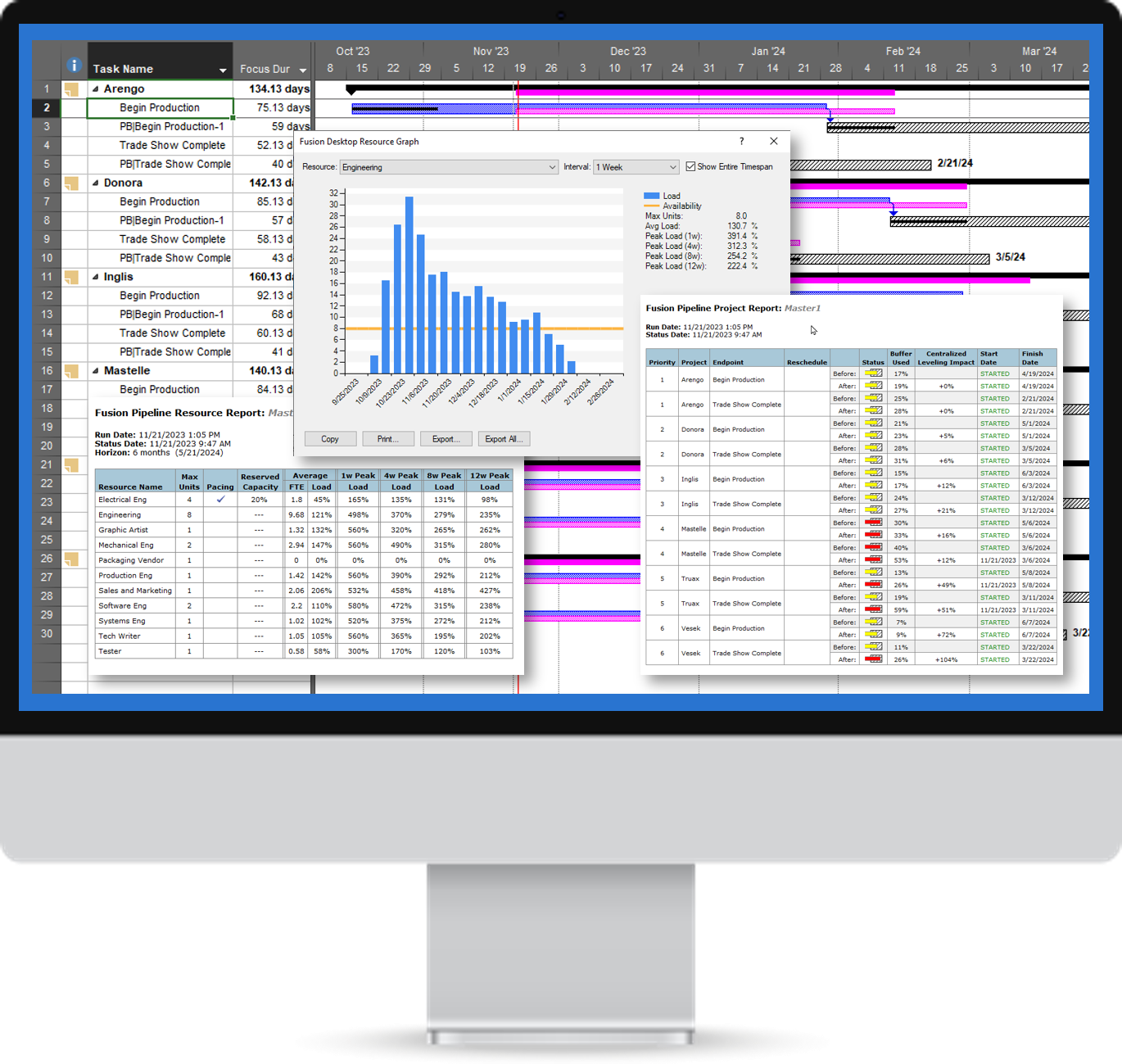
Key Features
- Fusion Online: A cloud-based system that enables real-time updates, analyses, and reporting on tasks and project status, facilitating immediate adjustments and decision-making.
- Fusion Desktop: Originally known as ProChain Project Scheduling, this desktop application provides Critical Chain scheduling capabilities for individual project management.
- Fusion Pipeline: Designed for synchronizing larger programs and entire portfolios, Fusion Pipeline focuses on shared resource management and consolidated reporting, ensuring alignment across all projects.
- Maintenance and Support: All Fusion products include ongoing maintenance throughout the subscription period, ensuring that users have access to the latest updates and support.
- Integration Capabilities: ProChain’s software is engineered to interface seamlessly with existing project management tools, including major enterprise applications, for efficient import, analysis, and export of schedules.
- Adaptability: The ProChain System is versatile, allowing for customized solutions to fit unique organizational needs, from testing on individual projects to full-scale enterprise deployment.
- Training and Consultation: ProChain offers a range of services, including Quick Start training and expert consultation, to maximize the effectiveness of their tools and methodologies within your organization.
- Certification Process: The comprehensive system includes a certification process, enabling the development of qualified internal experts to sustain long-term success with the ProChain methodology.
Realization
Streamliner is a project management platform developed by Realization. It focuses on overcoming the visibility issues inherent in the Critical Path method. Recognizing these limitations, Streamliner employs a novel approach to project management.

Key Features
- Focus-&-Finish Methodology: Built on the principles of Critical Chain Theory by Dr. Eli Goldratt, Streamliner’s methodology emphasizes completing tasks in batches to improve efficiency and project throughput.
- Resource Deployment Map: Offers a comprehensive view of how resources are allocated and utilized throughout the project lifecycle.
- Work Plan Execution: Details the execution scope within each batch, allowing for effective management and completion of project tasks.
- Risk Mitigation Plan: Prepares projects to handle emergent risks with full kits that outline tangible steps for mitigating potential obstacles to progress.
- Management Reporting: Enables the generation of various reports, including financial, volumetric, and compliance, to keep stakeholders informed.
- Execution Management: Provides automated, prioritized schedules for all management levels, facilitating seamless internal and external project coordination.
- Progress Reporting: Allows for real-time progress updates from various sources, including mobile phones, spreadsheets, and ERP systems.
- Issue Resolution: Features a system for reporting, tracking, and resolving runtime issues that may halt project progress.
- Integration and Alerts: Streamliner integrates with existing systems and offers smart alerts, including email and WhatsApp notifications, to ensure timely communication and actions.
Aurora-CCPM
Aurora-CCPM is a enterprise-level multi-project critical chain project management software. It integrates Stottler Henke’s intelligent planning and scheduling system with of CCPM. It is designed for ease of use and compatibility with existing project management and enterprise applications. Aurora-CCPM can be deployed from the cloud, hosted internally, or run as a standalone application.
Key Features
- Adaptability to Change: The software accommodates plan disruptions, including the integration of new tasks during project execution.
- What-If Analysis: Aurora-CCPM’s calculation speeds allow for quick and numerous what-if scenarios, aiding in proactive project management.
- Comprehensive Integration: Aurora-CCPM interfaces seamlessly with a wide range of enterprise applications like Primavera P6, Microsoft Project, and Oracle, facilitating easy import, analysis, and export of schedules.
- Intelligent Conflict Resolution: The software aids users in swiftly identifying and resolving scheduling conflicts, enhancing decision-making and project flow.
- Global Priority System: Aurora-CCPM establishes a clear, organization-wide understanding of priority tasks, aligning team efforts with strategic objectives.
Millarum SAP
Milliarum focuses on delivering solutions tailored for portfolio, project, and resource management within project-oriented environments. For over 15 years, the company has specialized in the design, integration, and operational support of solutions to streamline project handling and improve resource utilization.
Key Features
- Capacity and Resource Management: Implements planning and management solutions for project capacities using SAP’s data model and processes, aimed at reducing data entry and maintenance efforts.
- Enhancements for Project and Portfolio Management: Offers functionality extensions to integrate Lean and Critical Chain Project Management, real-time capacity data, schedule deviation alerts, simulation features, and dashboards into SAP’s project and portfolio management.
- SAP Infrastructure Solutions: Provides tools to enhance and simplify SAP application processes, including MS Office integration, process automation, customizable dashboards, and multi-project GANTT charts.
- User Interface Modernization: Displays project and resource demands in modern interfaces for clear visibility of bottlenecks and resource management.
- Project Execution and Reporting: Aims to facilitate project work and provide management with structured data and reporting tools for decision-making.
Milliarum positions itself as a provider of SAP solutions that address the specific needs of managing portfolios, projects, and resources in a corporate setting, leveraging SAP systems to enhance operational efficiency.
Allex.ai
Allex.ai is a cloud-based project management software designed with the principles of Critical Chain Project Management (CCPM) in mind. It aims to address the gap in digital solutions that contain some features for CCPM while being easy to use.

Key Features of Allex
- Theory of Constraint (TOC) Integration: Allex efficiently links projects, resources, and tasks. This is to effectively manage and anticipate constraints in real time.
- Critical Chain Project Management (CCPM): Allex adopts CCPM principles to align project plans with real-world variables. This includes incorporating risk buffers to manage the unexpected.
- Agile Methodologies Support: Supports Agile methodologies like Scrum, Kanban, and Lean.
- Bespoke Digital Buffering System: Allex’s unique buffering system allows for easy management of project “what-ifs”, enhancing productivity and scalability.
- Multi-directional Scheduling: Offers both forward and backward scheduling to identify the most efficient critical chains, improving project efficiency.
- Mobile Accessibility: With Allex’s mobile version, project control is possible from anywhere, ensuring continuous project oversight.
Epicflow
Epicflow presents itself as a web-based platform designed to manage resources across multiple projects. It incorporates elements from CCPM, including capacity buffers alongside the traditional time buffers. This tool aims to manage project environments by focusing on resource availability to prevent overloads and resolve bottlenecks.
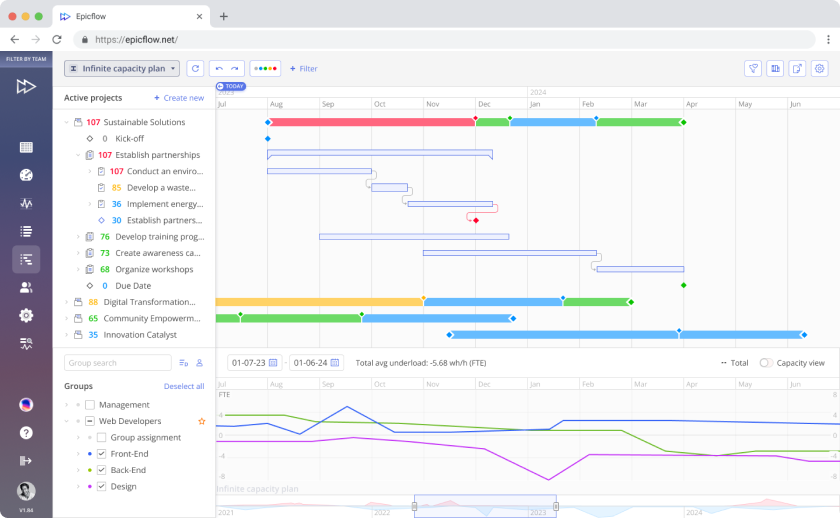
Key Aspects of Epicflow
- Project and Team Visibility: Epicflow provides insights into the performance of team and the overall status of the portfolio. This aims to facilitate the decision-making processes.
- Prioritization Mechanisms: In environments where multiple projects are managed concurrently, Epicflow includes prioritization features. These organize tasks efficiently, reducing unnecessary efforts and streamlining planning.
- Resource Planning and Workload Management: The tool emphasizes resource planning and the creation of effort-based workloads. This enhances the productivity and efficiency of team members.
- Mobile Accessibility: Epicflow is accessible via a mobile version, allowing for project management activities to be conducted remotely.
Choosing the right CCPM Software
Choosing the ideal CCPM software is more than just a technical decision. It’s also about finding a solution that resonates with your team’s work style and project goals. Here are some steps to guide your decision-making process:
- Assess Your Needs: Understand the complexities and specific requirements of your projects. Consider factors like the size of your team, the number of concurrent projects, and the nature of your workflows.
- Trial and Error: Most CCPM software providers offer demos or trial periods. Use these to see how the software works for you.
- Check for Integrations: Ensure that the CCPM tool can seamlessly integrate with your current tools and systems. This minimizes disruptions and maintains continuity in your workflows.
- Evaluate Support and Training: Look for providers who offer extensive documentation, responsive customer service, and training options.
- Consider Future Growth: Select a tool that meets your current needs and has the scalability to accommodate future growth. This includes the ability to handle more complex projects and additional users.
